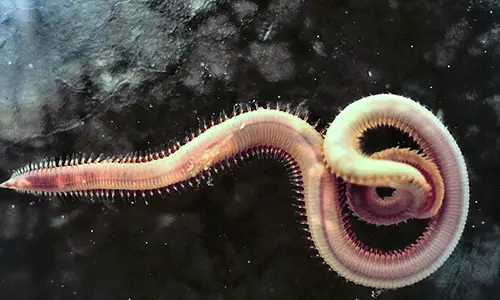Annelids are the segmented worms like earthworms, ragworms and others that we see practically everywhere.
Fact 1 Structure Of Annelids
Annelids are a species of worm that includes various other worms including leeches etc. There are about 17,000 varieties of species seen in different parts of the world. They vary in sizes starting from the microscopic worms to the huge Gippsland Earthworm of Australia which are about 10 feet long. However the structure of all the bodies is more or less the same. They are tubular and narrow with many divisions that are marked out by ring-like segments. The brain, mouth and sensory system lie in the front portion of the body and the anus is at the rear portion. The digestive system circulatory system and the sensory system are located in the mid-section. They are invertebrates and the segments grow as the annelids grow older. The circular and radial muscles help them to carry out the functions of the body. Some annelids move with the help of muscles that contract and expand that creates a sweeping motion. When the body moves it looks like a wave. With the help of these muscles known as Peristalsis they can crawl and swim also.
Fact 2 Where Annelids Live
Annelids are mostly found in wet and moist areas. They also thrive in fresh water and marine environments. They are found lurking in gardens like the earthworms while the lugworms and ragworms dig into the muddy areas along the sea beaches. They can burrow well into the soil to protect themselves from birds and other insects that eat these annelids. There are innumerable types of segmented worms and so they are found nearly all over the world. They can live in the bottoms of the oceans and also beneath mountain glaciers as well as crevices in rocks, sand and mud.
Fact 3 Their Food Habits
All annelids do not eat the same food. Their diets vary according to the availability of food. The lugworms feed on filters while leeches are despised as they are blood-suckers. It is for this reason leeches are known as parasites and once they hold on to the body, it is very difficult to remove them.
Fact 4 Special Characteristics Of Annelids
Most of the annelids share the same characteristics and features except that some live in water while others under the soil. The common features are namely:
- They all have segmented bodies. The segments are marked out clearly and as they grow older these divisions become more prominent. There are specific functions of each part and the outer and inner compartments correspond to each other.
- The walls of the body of all annelids are covered with epidermis and a thin cuticle secretion covers the outer layer. There are well-arranged muscles that help them to perform all their activities like crawling and other movements. To hold on to the soil, annelids have short bristles that are made of chitin.
- Although there are segments in the body of annelids, the digestive system is undivided and runs from the mouth till the tip of the anus. There are blood vessels like humans and a fluid provides the animal the ability to resist muscular movements and rigidity.
- Annelids contain hemoglobin which is mostly red in color. But some have green hemoglobin while others have unpigmented blood vessels. Blood circulation continues within the blood vessels and blood is distributed to all the parts by lateral vessels. The contractile blood vessels work in the same way as the human heart
- Respiration takes place either through the gills or through the walls of the body.
- The nervous system of annelids comprises of eyes, tentacles, taste and statocysts and a ring of ventral nerves and lateral nerves.
The young annelids are born from cocoons and look like the adults in a miniature form.











Leave a Reply